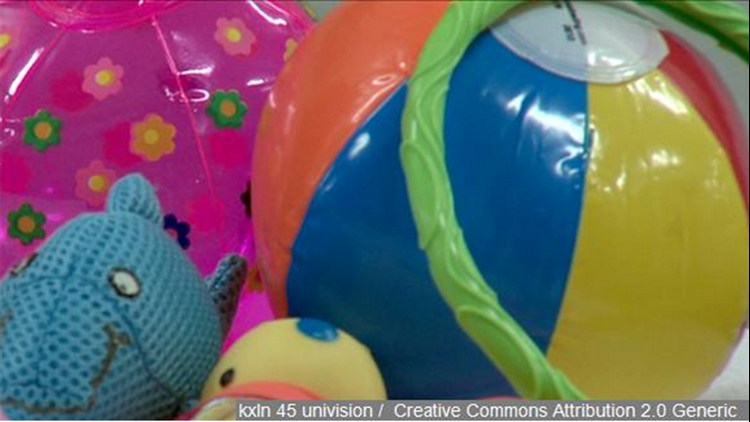Despite some criticism, the big box retailer has been quick to act on its pledge.
Stores across the country have removed references to “boys” and “girls” in toy, home and entertainment aisles and traded in pink and blue shelves for a neutral, wood-grain look. Instead, toys are sorted by categories — dolls, action figures, building sets, etc. — while books and movies are sorted by genre and bedding is just… bedding. (For now, Target’s website is a different matter.)
Some derided Target for caving to overly-sensitive, politically-correct factions of the American public. Let girls be girls and boys be boys, they argued, and lamented that public bathrooms might be next.
Those on the other side of the debate, who welcomed the shift as a positive step toward gender equality, have a different rallying cry: Let toys be toys already.
Like it or not, it’s happening, and — if decades of research are to be believed — that’s probably a good thing. Here’s what science has to say about making the toy aisle gender-neutral.
Boys and girls are not as different as we say they are
We’ve heard it all before: Girls are natural caregivers who are more nurturing than boys and that makes them more attracted to dolls. Boys are more likely than girls to prefer games, puzzles and learning toys because they are better at math and science.
Those tropes may not reflect biology as much as social expectations.
There’s no denying men and women are biologically different. When it comes to psychological traits and abilities, time and again, the evidence has suggested men and women, as well as boys and girls, are more alike than they are different.
Various studies in the past decades have assessed the impact of gender on traits that define our personalities: verbal and nonverbal communication, aggression, leadership, self-esteem, moral reasoning and motor behaviors. The most recent meta-analysis of those findings, published in 2005 in American Psychologist, found that 78% of the magnitude of gender differences were in the small or close-to-zero range.
A few common perceptions held, according to psychologist Janet Shibley Hyde of the University of Wisconsin in Madison. Compared with women, men could throw farther, were more physically aggressive, and held more positive attitudes about sex in uncommitted relationships.
The studies also found these characteristics fluctuate with age, depending on environmental influences, challenging perceptions that gender differences are large and stable, Hyde wrote.
What does any of this have to do with toys? Nothing, really, which is basically the point. Parents and environment are more likely to influence which toy a child picks up, not gender.
It goes beyond play time to expectations for how children think, behave, even their aspirations.
“When we tell children dolls are for girls and trucks are for boys, we’re telling them not only are you a boy or a girl, but that being a boy or a girl is going to determine how you think and act and the skills you will develop,” said University of Kentucky psychology professor Christia Spears Brown, author of “Parenting Beyond Pink and Blue: How to Raise Kids Free of Gender.”
Different toys benefit children in different ways
It’s a perception that makes psychologists and educators cringe: They’re just toys; they don’t influence my children.
Not so, according to decades of peer-reviewed scientific research of how toy play impacts childhood development. Dolls bring out nurturing skills and empathy; building blocks develop spatial skills; reading maps and hitting targets with balls increases cognitive skills.
It benefits children to experience all the things.
“Every time children play with toys, they’re getting something out of it. They’re learning something about the world,” said developmental psychologist Erica Weisgram of the University of Wisconsin-Stevens Point.
“We need to be asking what are they learning; and, if they’re playing with different toys, is it OK to learn different things?”
Color and labels can matter, too. Weisgram co-authored a study published in 2014 that explored how labeling toys for girls and boys and using gender-typed colors impacts children’s toy preferences.
“Children can develop various skills more fully with a variety of toys and activities that can help them practice and hone these skills,” Weisgram said. “Breaking down gender stereotypes surrounding these toys and activities can help them to engage in them and more fully reach their potential.”
Researchers showed children toys in different colors — monster trucks and fairy wands in pink or blue, among others — and asked them who the toys were intended for and if they would play with them.
The responses indicated boys were uninterested in feminine toys regardless of color. Girls were interested in masculine toys when they were pink and purple, but they were significantly less interested in masculine toys with colors perceived to be masculine.
“When children see and hear gender labels from parents, peers, siblings, grandparents, and even the toy aisles themselves, these messages will sway a child’s interest away from some toys and toward others,” Weisgram said.
“We feel children should be free to follow their interests, without gender labels and stereotypes swaying them.”
Color-coding toys can backfire down the road
If selling girls pink monster trucks makes girls more likely to play with them, that’s a good thing, right? Maybe so, but the long-term implications for childhood development may not be worth it.
It’s a conundrum epitomized by LEGO Friends, the purple-packaged building sets launched in 2012 to appeal to girls uninterested in classic LEGO sets, according to the toy company.
LEGO said it developed the line based on market research of what girls wanted in a construction toy. The feedback — “realistic themes in community and friendship” — led to Heartlake City, a LEGO land featuring curvy “LadyFigs” with names and backstories about getting dolled up in salons, lounging at the pool and shopping with friends.
Despite flak from parents, educators, psychologists and media critics, LEGO Friends’ popularity is not really surprising. There’s overwhelming evidence that shows children, if given the choice, go for toys based on gender associations. Those choices then affect their development.
But what message does that send, and should we encourage it?
“Ultimately it tells kids you’re so different based on your gender that you can’t even play with the same toy,” said Brown, author of “Parenting Beyond Pink and Blue.”
“If that’s what you tell them, are you going to be surprised when they grow up and think there are some jobs only girls can do and some only boys can do? If you’re so different biologically at 8 years old that you can’t play with the same toy, why would you expect equality in adulthood?”
Even if girls are drawn to masculine toys in feminine colors, they might still think of them as “different” than the boys’ version — and that’s the problem.
Toys with strong feminized themes — chemistry sets to invent makeup, building sets to design a shopping mall — leave girls with a narrow set of experiences and exclude girls that aren’t interested in makeup or shopping, Washington and Lee psychology professor Megan Fulcher said
Like sports team logos and colors, these toys represent a social group to which we belong. Children begin to identify with a color and actively reject others.
“It sends a worrisome message to girls that they are welcome to do math, engineering, science or even superheroes as long as they do it differently than boys,” Fulcher said.
Hyperfeminized toys may even backfire by overemphasizing the importance of gender associations, said psychologist Emily F. Coyle, who examined the impact of feminized characters in a recent study described in “Developmental Interventions to Address the STEM Gender Gap.”
“Simply making traditionally masculine toys pink might attract girls to the toy on one level, but it doesn’t guarantee that girls won’t apply their experience with traditionally feminine modes of play when they use the toy,” she said.
“Making toys appealing on the basis of femininity might be really attractive to girls with feminine interests, but it doesn’t guarantee that girls will learn the messages we might be trying to package with that.”
Toy makers have a role to play, too
In sum, parents have tremendous influence on the toy preferences of their children, maybe even more than the toy store. But parents only recently began to actively cross the gender line when it comes to purchasing toys for their children, for all the reasons mentioned above.
For the most part, numerous surveys and studies over the years have found adults tend to encourage gender-typed play among children by the kinds of toys they purchase. It’s a cycle: Gender stereotypes are fostered in childhood and take shape in adulthood, to be passed on to children.
Toy makers take advantage of this cycle by packaging toys in gender-specific colors and labels, reinforcing stereotypes.
But it doesn’t have to be this way, says Bjorn Jeffery, co-founder of Toca Boca, which makes digital toys for children 3 to 7.
Toca Hair Salon and Toca Hair Salon, which features male and female characters of different races, are the company’s top-selling apps in terms of downloads and revenue, outselling Disney’s Princess Salon.
Bjorn says conventional wisdom that boys and girls prefer certain toys in a specific color based on gender is a “self-fulfilling prophecy and a bit of a cop-out,” especially when you take history into account.
In her best-selling book, “Cinderella Ate My Daughter,” Peggy Orenstein writes that toy marketing companies have increased the use of gender-typed colors in the packaging of toys in recent decades to boost profits. Prior to World War II, the rule was pink for boys and blue for girls.
Gender neutral is part of Toca Boca’s brand strategy, says Bjorn. It means using a broad color palette and diverse characters that appeal to boys and girls within the same play environment, be it in a beauty salon or at a tea party.
It’s a good business model, financially and ethically, he said. By creating products that appeal to both sexes, Toca Boca effectively doubles its market without steering children in one direction or another.
“I’d rather let children have the freedom to play with whatever they want to play with,” he said. “It gives them the right to choose.”
He acknowledges that Toca Boca has a distinct advantage in not having to rely on traditional retailers or brick and mortar stores to sell its products. That’s the beauty of disruptive business models, he said: “You can challenge status quo without having to go head on.”
If Target can do it, he’s hopeful others will follow.



